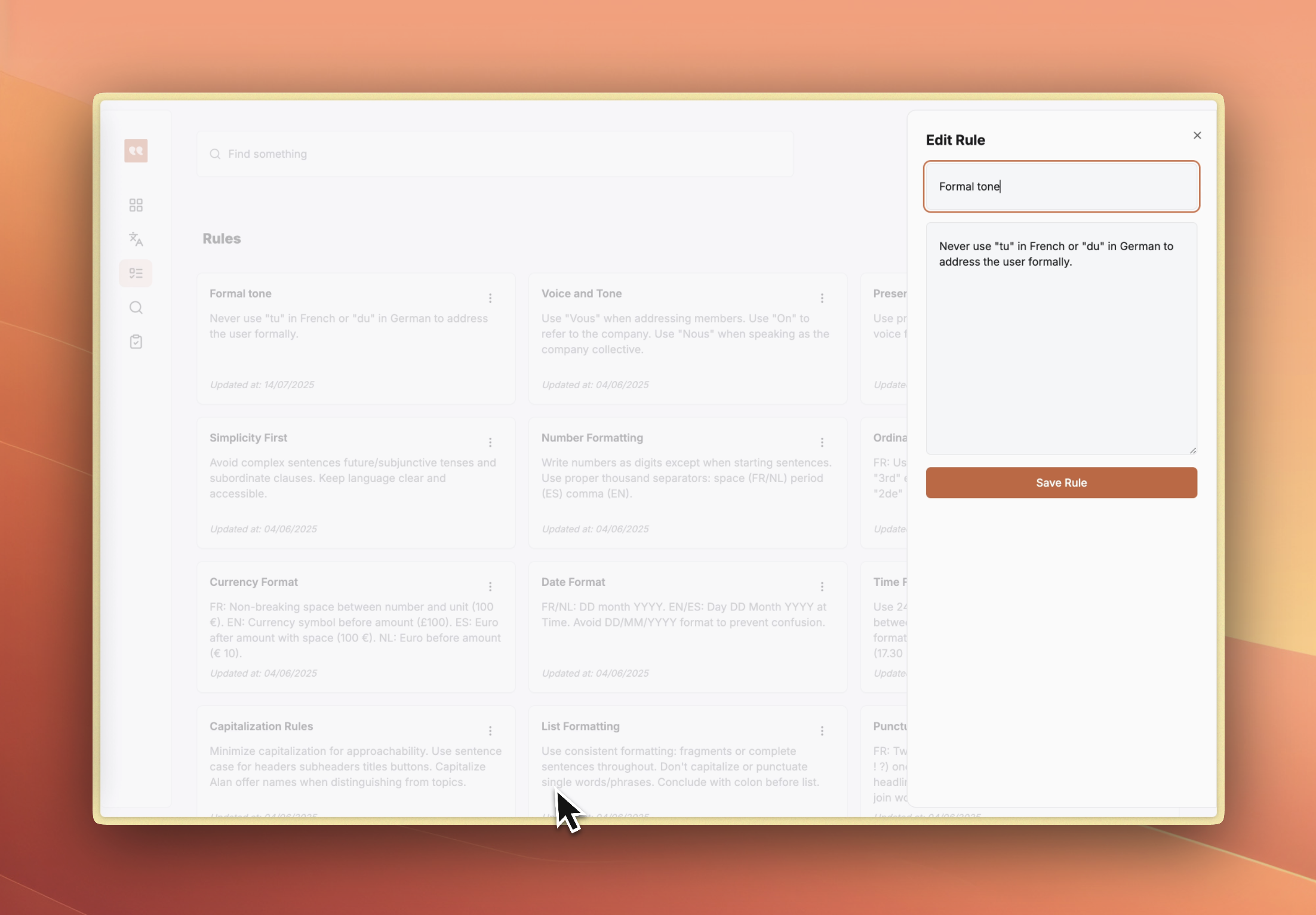Translation Rules
Translation Rules allow you to customize how AI generates translations, ensuring consistency with your brand voice and style across all languages.
Creating Rules
Rule Setup
- Navigate to Translation Rules section
- Click “Create New Rule” button
- Enter rule title and detailed description
- Provide examples of good and bad translations
- Save and activate the rule
Rule Types
Tone and Voice- Control formality levels (formal vs casual)
- Define brand personality in translations
- Specify addressing conventions (tu/vous, Sie/du)
- Number formats (1,000 vs 1.000)
- Date formats (DD/MM/YYYY vs MM/DD/YYYY)
- Currency display (€100 vs 100€)
- Time formats (24-hour vs 12-hour)
- Prefer present tense and active voice
- Avoid complex sentence structures
- Use consistent terminology across translations
Rule Examples
Formal Tone Rule
Currency Format Rule
Voice and Tone Rule
Managing Rules
Rule Organization
- Search rules by title or description
- Edit existing rules to refine guidelines
- Delete outdated rules that no longer apply
- View rule usage in translations
Rule Application
- Automatic application to new translations
- Retroactive effects may apply to existing content
- Rule conflicts resolved by priority order
- Rule testing with sample translations
Best Practices
Effective Rule Writing
- Be specific - provide clear, actionable guidance
- Include examples - show correct and incorrect usage
- Consider context - account for different content types
- Keep updated - regularly review and refine rules
Rule Management
- Start simple - begin with basic tone and formatting rules
- Add gradually - introduce new rules based on observed needs
- Test thoroughly - verify rules produce expected results
- Team alignment - ensure rules reflect team consensus
Common Rule Categories
- Formality levels for different languages
- Brand voice consistency across all content
- Technical terminology standardization
- Cultural adaptation for regional markets